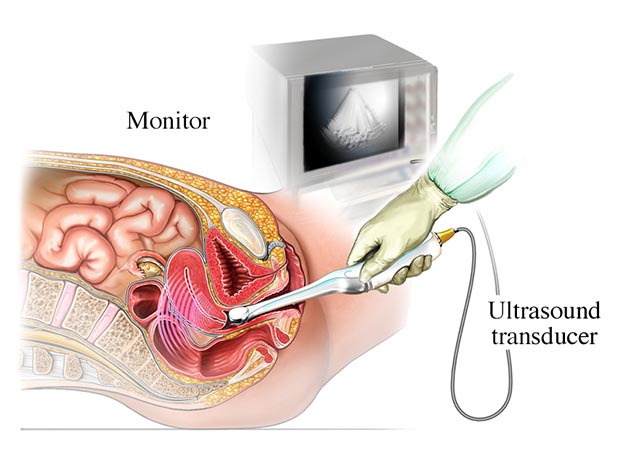A women’s health advocate and a male doctor sit side-by-side. Together they are organizing a women’s clinic that will provide prenatal care and educate women about their reproductive health. Opposite them on the other side of a wide wooden table sits a nun in full habit. The doctor and the advocate watch attentively as the nun makes marks on a piece of paper.
“This is rather infelicitous language, isn’t it?” asks the nun, pushing the paper forward and pointing emphatically at a word with her eraser, a concerned look in her eyes.
The pair stands and approaches the table, bending over to read the offending word.
“Vagina?” says the advocate.
“It is a medical term,” adds the doctor.
“I’ve never enjoyed the sound of it,” responds the nun.
The doctor retorts: “I’ve never liked Brussels sprouts but I don’t deny they exist.”
When the advocate, trying to smooth things over, asks what word she would prefer instead, the nun admits, “The entire area is problematical.” 1
Given the heated political exchanges in 2012 about coverage for birth control in the Affordable Care Act, on the one hand, and state legislation mandating transvaginal ultrasounds before abortion on the other, the above exchange could easily have taken place in a recent four-panel editorial cartoon. Or, insert a few well-placed laugh tracks and some knowing winks and it might be a timely comedy sketch from a late-night television show. In fact, this scene from the HBO drama Boardwalk Empire is meant to take place ninety years ago. In 1923 women had just gained the right to vote, and abortion and birth control were still decades away from legalization. Nonetheless, women’s bodies were, as they are today, the target of policies to control the population; to improve maternal morbidity and mortality; and to prevent miscarriage, preterm deliveries, and intrauterine death. But take away the doctor’s pipe, Margaret Thompson’s drop-waist dress, and the nun’s outdated habit, and the issues raised by the scene remain chillingly apropos at a time when efforts to limit access to birth control and abortion have taken center stage.
In 2012 the American public was forcefully and repeatedly reminded of the “problematical” nature of women’s sexual and reproductive anatomy, particularly the vagina. Female legislators and advocates were censured, censored, and derided for daring to publicly speak about the vagina and its needs, even as pundits and comedians had a heyday with Virginia’s so-called “vaginal probe” bill, HB 462. Using the Virginia legislation as a springboard, this essay argues that the controversy occasioned by the bill opens up the possibility of shifting the abortion discourse from the uterus and the fetus, where it has focused in the past, to the vagina. When I write the word vagina here, I am not using it as shorthand for the whole “problematical area;” I do not mean the vulva. Rather, I am referring to the specific anatomy, the muscular tube between the labia and the cervix that is often glossed politically on the way to the uterus. I contend that political events in 2012, concentrated in the contradiction between the unspeakability of “vagina” and the particular prominence given to the transvaginal ultrasound, offer the possibility of considering the technology of sound as a new frame for a feminist discourse on reproductive health. In addition to the Virginia bill, performances of what I call vaginal politics are discussed, including the Funny or Die sketch, “Republicans, Get in My Vagina;” the silencing of a Michigan legislator after she used the word vagina on the House floor; and a 2010 dance by choreographer Arianne Hoffmann in which Hoffmann generated a live soundscape as she danced by placing a microphone in her vagina.
Sounding Out Virginia’s Vaginas
After a year in which an unprecedented number of anti-abortion provisions were enacted around the United States, 2 the issue exploded in the national media in late February 2012. The precipitating event was a bill amending the Virginia Informed Consent for Abortion law to require that women undergo an ultrasound at least 24 hours before obtaining an abortion. This type of legislation was not new. When Virginia’s law was being debated, 21 states already regulated ultrasound as part of abortion care, with 7 of those states mandating ultrasound, and 2 states requiring that the woman be shown the ultrasound image. Despite its similarity to laws then being enforced in five other states, the Virginia bill caught the attention of the public because it in effect would have required a transvaginal ultrasound. Dubbed by the media a “vaginal probe” ultrasound, this is an invasive procedure in which a device called a transducer, “larger than a tampon, smaller than a speculum,” 3 is inserted into a woman’s vagina.

Although the bill did not explicitly mandate the use of this form of ultrasound, it did require the following:
[F]etal ultrasound imaging and auscultation of fetal heart tone services on the patient undergoing the abortion for the purpose of determining gestational age. The ultrasound image shall be made pursuant to standard medical practice in the community, contain the dimensions of the fetus, and accurately portray the presence of external members and internal organs of the fetus, if present or viewable. 4
In reality, the transabdominal ultrasound—you know, the procedure from the scene in movies and on TV shows where the happy pregnant woman has gel applied to her tummy and a moment after the wand is applied, an image of her baby magically appears on the monitor—cannot adequately provide the data required by the bill at the point in the first trimester when the majority of women have abortions. 5 Research has confirmed that transvaginal ultrasound is more effective than transabdominal in the detection of early pregnancy and its complications because the transducer is closer to the uterus and ovaries and is able to provide more details in the early weeks of pregnancy. 6 In effect, though not in word, the Virginia bill would have required the transvaginal version of the procedure.
Ultrasound actually refers to all sound waves with frequencies above the normal range of human hearing, approximately 20 kilohertz, with medical ultrasound typically employing waves at 2 megahertz and above. A tool called a transducer both projects the sound waves and receives their echoes. When the sound waves encounter tissue, they either pass through or are reflected, depending on the density of the tissue. Ultrasound is particularly useful in distinguishing between fluids and solid matter; the latter, for example, bone, appears white in the ultrasound image while the former appears black. Although ultrasound is perhaps best known for its use during pregnancy to monitor fetal development (it was first used as a medical diagnostic tool in the early 1960s for fetal measurement), it is widely used on the soft tissues of the body as a diagnostic and therapeutic tool in order to make internal organs and structures visible. 7 The tool offers the benefits of low cost, portability (it can be done in an office visit), and no exposure to radiation.
The physics of sound sets limitations on what ultrasound can do. The waves cannot penetrate deeply and cannot, for example, penetrate bone. Moreover, normal features of the body (skin, gas or air bubbles, body fat, etc.) can interfere with the sound waves. The varying resistance met by the sound encountering various densities causes the waves’ echoes to return at differing speeds, producing signals that are transmitted to an ultrasonic scanner where they are translated into grayscale digital images that can be read by a trained technician. The quality of the image depends on the skill of the technician, who may need to shift and reposition the transducer a number of times in order to generate the best image, sweeping the sound wave by keeping the implement in motion the whole time.
MedLine Plus, a website run by the US National Library of Medicine and the National Institutes of Health, lists all the uses of transvaginal ultrasound including diagnosing pelvic pain, abnormal physical exams, abnormal bleeding, and infertility. The procedure can be used to image the ovaries, uterus, and cervix, and can diagnose ectopic (tubal) pregnancy. 8 Absent from this list is determining gestational age in advance of first-trimester abortion. Moreover, medical studies have shown that other available methods of determining gestational age, including using the woman’s last menstrual period (LMP) along with a physical exam, are highly effective. 9 This contradiction between standard medical uses of transvaginal ultrasound and the failed Virginia mandate highlights the political motivations behind the medically unnecessary provision.
Despite wide agreement in the medical community that routine ultrasound is not medically necessary for first trimester abortion, since the mid-1990s mandatory ultrasound laws have increasingly been deployed as a tactic to reduce the number of abortions in the United States. According to the Guttmacher Institute, currently “12 states require verbal counseling or written materials to include information on accessing ultrasound services and 21 states regulate the provision of ultrasound by abortion providers,” including 8 states with ultrasound mandates. 10 On the one hand, the laws make abortion provision more onerous by adding regulations, requiring the purchase of additional medical equipment, and increasing the total costs. 11 On the other hand, they are also intended to dissuade women from having abortions both logistically (through requiring an additional and medically unnecessary office visit) and emotionally. The idea is that a woman will see a “picture” of her “child” and decide that she can’t go through with the abortion after all. 12 Interestingly, the Food and Drug Administration discourages nondiagnostic use of ultrasound (e.g. the production of keepsake photos), 13 and yet the viewing of these images to dissuade women from abortion is mandated in 2 states. An additional 20 states require that a woman have an opportunity to view her ultrasound images. 14 In some cases, such as in the Virginia bill, the law actually requires the clinic to make a print of the ultrasound image and place the document in the woman’s file as a stubborn rhetorical gesture that says, “evidence of the life you’re destroying will stay with you forever”—a sort of scarlet letter, in the form of grayscale sonic echoes.

National attention to the Virginia bill came on February 20, 2012, the day thousands of Virginia women silently lined the halls and grounds of the Virginia state capitol, standing arm-in-arm in protest of the transvaginal ultrasound bill and a number of other anti-abortion provisions including fetal personhood and so-called TRAP laws (Targeted Regulations of Abortion Providers). 15 Not coincidentally, the House delayed their vote on the controversial bills that day. As news and social media exploded with reports of “state-mandated rape” and “vaginal probes,” the bill became fodder for pundits and comedians, including send-ups that pointed out the ludicrousness of the bill on The Daily Show with Jon Stewart, Saturday Night Live, and the website Funny or Die. Within two days, protest against the bill in the state and across the country had grown to such a level that the anti-abortion Republican governor, Bob McDonnell, withdrew his support from a bill that would mandate transvaginal ultrasound, saying:
I believe there is no need to direct by statute that further invasive ultrasound procedures be done. Mandating an invasive procedure in order to give informed consent is not a proper role for the state. No person should be directed to undergo an invasive procedure by the state, without their consent, as a precondition to another medical procedure. 16
McDonnell urged the legislature to amend the bill to make clear that no woman would be required to undergo a transvaginal ultrasound before obtaining an abortion in Virginia. The House and Senate approved the amendments, and the governor signed the bill into law on March 8th.
- Boardwalk Empire, “Blue Bell Boy,” HBO, 7 Oct. 2012. Written by David Stenn, directed by Kari Skogland.[↑]
- According to the Alan Guttmacher Institute, 2011 saw an unprecedented number of attempts to legislate reproductive health in the 50 states. By the end of the year, 92 provisions restricting abortion were passed in 24 states, almost triple the number for 2010. See “Laws Affecting Reproductive Health and Rights: 2011 State Policy Review,” http://www.guttmacher.org/statecenter/updates/2011/statetrends42011.html). For the latest information on federal and state anti-abortion legislation, see the Guttmacher Institute’s “An Overview of Abortion Laws,” updated monthly at http://www.guttmacher.org/statecenter/spibs/spib_OAL.pdf (PDF); the Center for Reproductive Rights’ “2011 at the Midpoint: The State of Reproductive Rights,” available at http://reproductiverights.org/en/feature/2011-at-the-midpoint-the-state-of-reproductive-rights; and NARAL Pro-Choice America’s annual “Who Decides? The Status of Women’s Reproductive Rights in The United States,” at http://www.prochoiceamerica.org/government-and-you/who-decides/.[↑]
- Cedars Sinai. “Transvaginal Ultrasound.” http://www.cedars-sinai.edu/Patients/Programs-and-Services/Imaging-Center/For-Patients/Exams-by-Procedure/Ultrasound/Transvaginal-Ultrasound.aspx. Accessed 9/28/2012.[↑]
- This is the language that passed the Virginia Senate on 30 Jan. 2012, as SB 484, and that the House initially considered, http://leg1.state.va.us/cgi-bin/legp504.exe?121+ful+SB484S1. Accessed 9/20/2012.[↑]
- Guttmacher Institute, “Facts on Induced Abortion in the United States,” (2011). http://www.guttmacher.org/pubs/fb_induced_abortion.html. Accessed 10/17/12.[↑]
- See for example: K. Jain , U. Hamper, and R. Sanders, “Comparison of Transvaginal and Transabdominal Sonography in the Detection of Early Pregnancy and Its Complications,” AJR 151 (1988): 1139-1143. See also: K. Thorsen, T. Lawson, E. Aiman, D. Miller, M. McAsey, S. Erickson, F. Quiroz, and R. Perret, “Diagnosis of Ectopic Pregnancy: Endovaginal vs Transabdominal Sonography,” AJR 155 (1990): 307-310.[↑]
- It is important to acknowledge that ultrasound is also used as a technology to enable sex selection, notably in India. Whereas in the United States, ultrasound is increasingly being mandated by the government to dissuade women from having abortions, ultrasound is also sought out by women (responding to familial and societal pressure that favors male children over female) as a tool to decide whether or not to have an abortion. That is, if the ultrasound shows a female fetus, the woman would have an abortion. Rather than being used as evidence of life and a sort of rhetoric of life, then, ultrasound in these cases is being used to create a hierarchy in which life is differentially valued.[↑]
- MedLine Plus, “Transvaginal ultrasound,” available at http://www.nlm.nih.gov/medlineplus/ency/article/003779.htm. Accessed 9/28/12.[↑]
- H. Bracken, W. Clark, E. Lichtenberg, S. Schweikert, J. Tanenhaus, A. Barajas, L. Alpert, and B. Winikoff, “Alternatives to routine ultrasound for eligibility assessment prior to early termination of pregnancy with mifepristone–misoprostol,” BJOG 118 (2011): 17–23.[↑]
- The eighth state was Virginia. Guttmacher Institute, “State Policies in Brief: Requirements for Ultrasound,” available at http://www.guttmacher.org/statecenter/spibs/spib_RFU.pdf (PDF). Accessed on 1 Oct. 2012.[↑]
- It is ironic that Republicans who had fought against the mandates in the Affordable Care Act would back a measure that would increase the costs of health care by requiring an unnecessary medical procedure. While the law did include a provision for women to be given information about public and private agencies that provide ultrasound free of charge, it remains unclear whether or not insurance companies will cover ultrasound if it is governmentally mandated but not medically indicated.[↑]
- This idea is not new. Nathan Stormer notes that “even before high-quality, mass-reproduced images were possible, the potential rhetorical power of pictures of the unborn was noted. In 1910, physician Frederick J. Taussig wrote that, if women could be shown pictures of six-week-old embryos, they would not abort as often,” in “Looking in Wonder: Prenatal Sublimity and the Commonplace Life,” Signs 33.3 (2008): 649.[↑]
- See for example: Carol Rados, “FDA Cautions Against Ultrasound ‘Keepsake’ Images,” (2004). Available at https://www.sdms.org/pdf/FDAKeepsake.pdf (PDF). FDA Consumer Health Information, “Avoid Fetal ‘Keepsake’ Images, Heartbeat Monitors,” (2008). Available at http://www.fda.gov/downloads/ForConsumers/ConsumerUpdates/ucm095602.pdf (PDF).[↑]
- Guttmacher Institute, “State Policies in Brief: Requirements for Ultrasound,” available at http://www.guttmacher.org/statecenter/spibs/spib_RFU.pdf (PDF). Accessed 1 Oct. 2012.[↑]
- “Speak Loudly with Silence for Virginia Women,” Facebook page: https://www.facebook.com/events/187137214719838/.[↑]
- Statement of Governor Bob McDonnell on SB 484m available at http://www.governor.virginia.gov/news/viewRelease.cfm?id=1148. Accessed 28 Sept. 2012.[↑]



